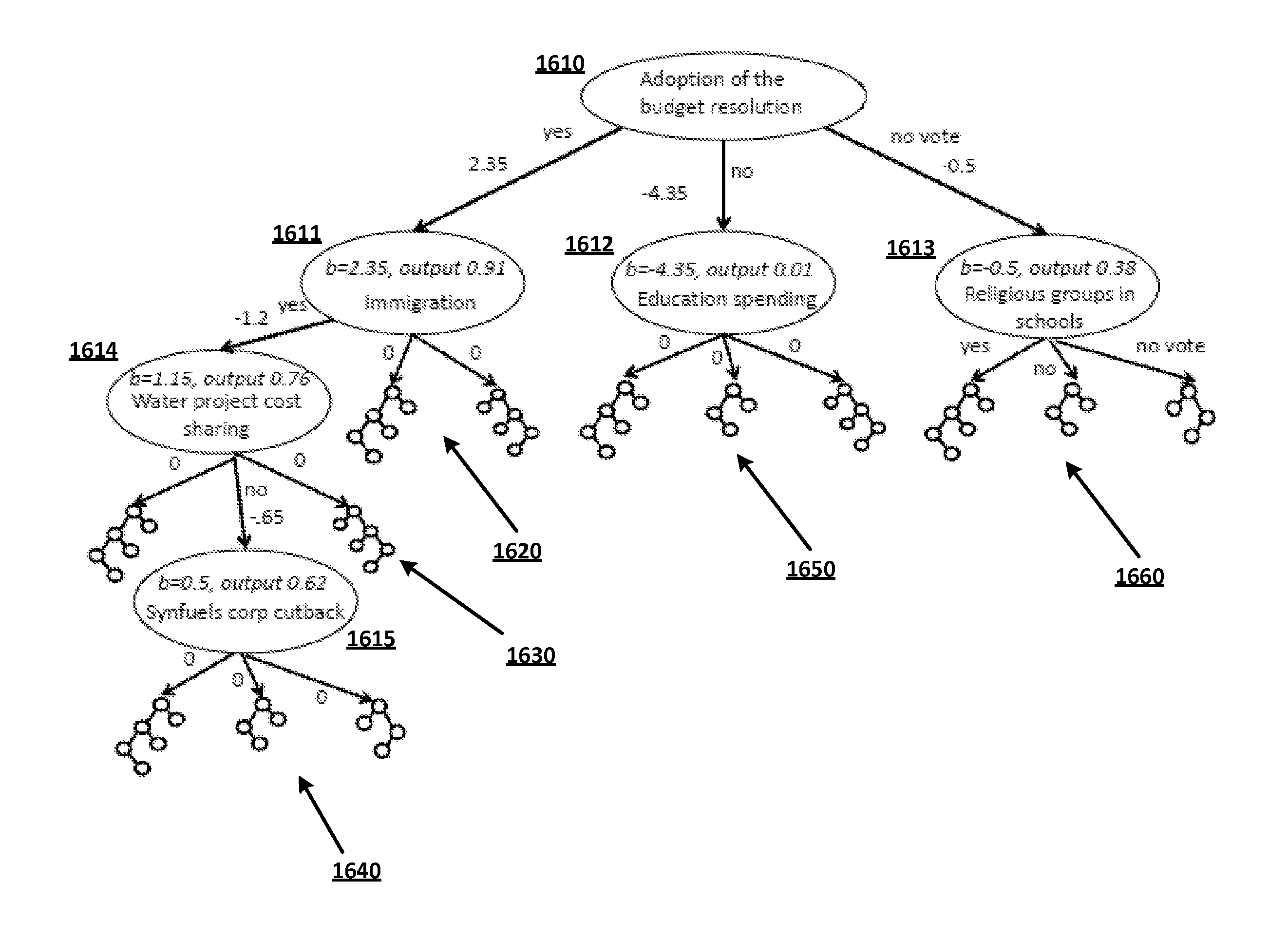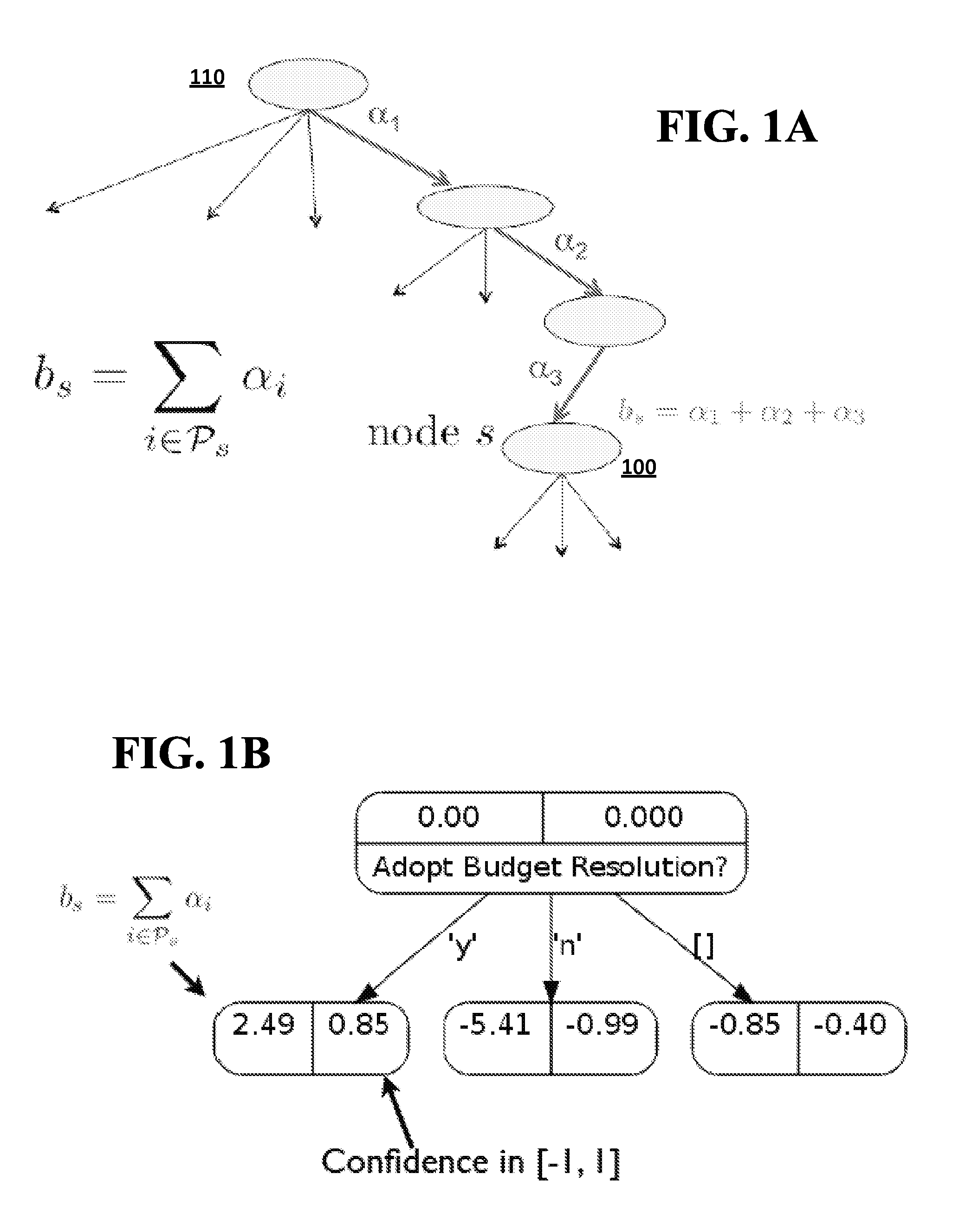Growth and use of self-terminating prediction trees
a prediction tree and self-terminating technology, applied in the field of self-terminating prediction trees, can solve the problems of ineffective or useless prediction of outcomes for other examples or data points, overgrown trees, and computationally expensive two-step growing and pruning processes
- Summary
- Abstract
- Description
- Claims
- Application Information
AI Technical Summary
Benefits of technology
Problems solved by technology
Method used
Image
Examples
Embodiment Construction
[0030]It has been found that decision / prediction trees may be more efficiently created, without requiring a separate pruning phase, by using self-terminating prediction trees (SPTs) as disclosed herein. Self-terminating prediction trees are a generalization of decision trees in which each node is associated with a real-valued prediction. Instead of having a separate pruning phase, a self-terminating tree may be constructed by applying various limits during tree growth that prevent nodes that add little or no additional decision power from being grown within the tree. For example, a parent node that would only have a single child node that provides little or no additional information relative to the parent's real-value prediction value may not be grown.
[0031]In general, any tree or tree structure that could be created using a conventional growing / pruning technique also may be created using embodiments of the disclosed subject matter. However, whereas growing / pruning techniques normal...
PUM
 Login to View More
Login to View More Abstract
Description
Claims
Application Information
 Login to View More
Login to View More - R&D
- Intellectual Property
- Life Sciences
- Materials
- Tech Scout
- Unparalleled Data Quality
- Higher Quality Content
- 60% Fewer Hallucinations
Browse by: Latest US Patents, China's latest patents, Technical Efficacy Thesaurus, Application Domain, Technology Topic, Popular Technical Reports.
© 2025 PatSnap. All rights reserved.Legal|Privacy policy|Modern Slavery Act Transparency Statement|Sitemap|About US| Contact US: help@patsnap.com



